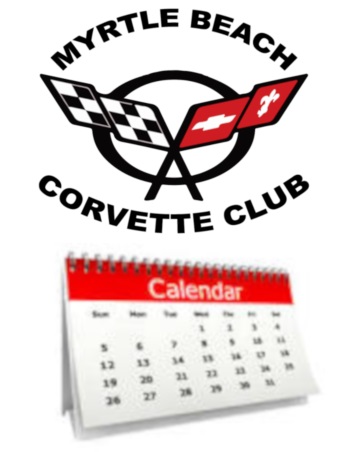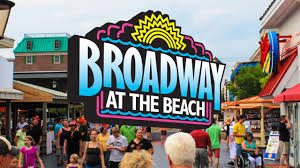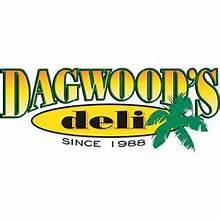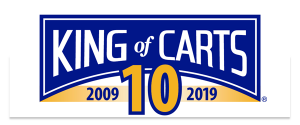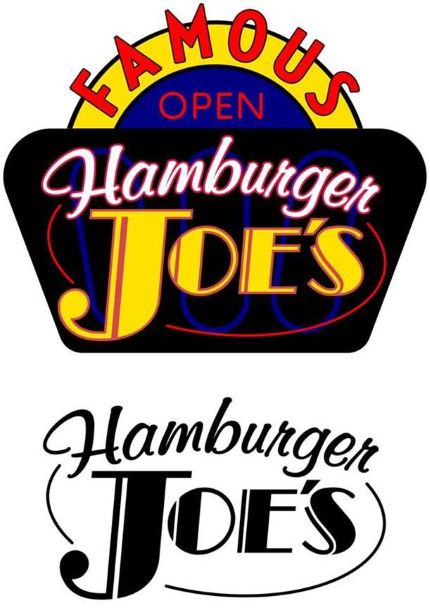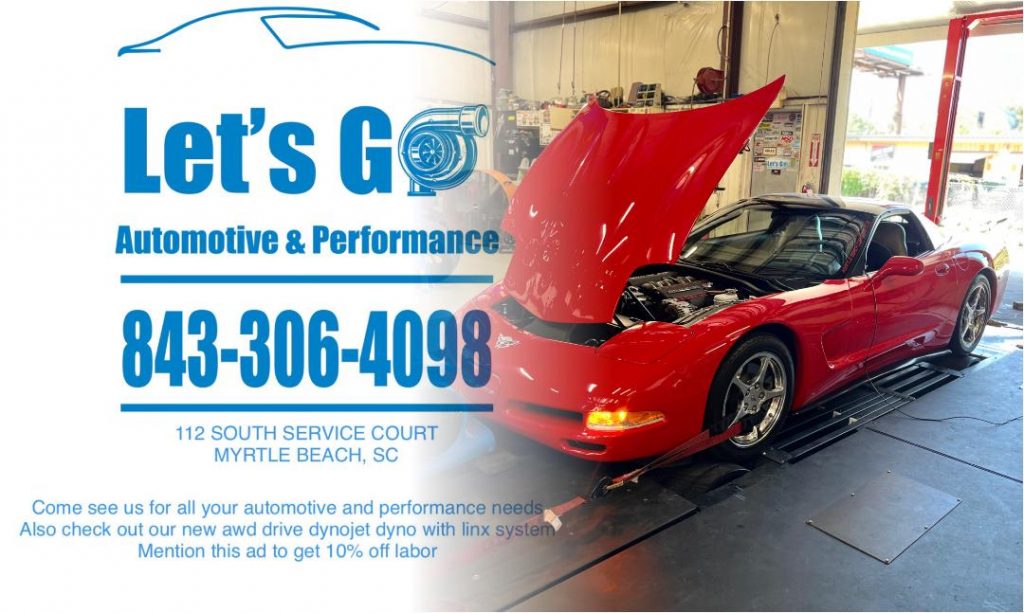Corvette History
C1 generation (1953-1962)
The first generation Corvette was introduced late in the 1953 model year and ended in 1962. These cars are often referred to as the “solid-axle” models since the independent rear suspension did not debut until the 1963 Sting Ray. 300 hand-built polo white Corvettes were produced for the 1953 model year, making it the rarest and one of the most sought after of all Corvettes. The 1955 model saw the introduction of the 265 cu in (4.34 L) V8 engine offered as an option, however the first seven off the production line featured the standard “Blue Flame” Inline-6.
A new body shape was introduced with the 1956 Corvette and an optional fuel injection system was made available starting in the middle of the 1957 model year. It was one of the first mass-produced engines in history to reach 1 bhp (0.75 kW) per cubic inch and Chevrolet’s advertising agency used a “one hp per cubic inch” slogan for advertising the 283 bhp (211 kW) 283 cu in (4.64 L) Small-Block engine. Other early options included power windows (1956), hydraulically operated power convertible top (1956), four speed manual transmission (late 1957), and heavy duty brakes and suspension (1957).
The 1958 Corvette received another body freshening, with the most exterior chrome of any C1 generation model: quad headlights, hood louvers, twin trunk spars, and bumper exiting exhaust. The 1959-60 model years had few changes except a decreased amount of body chrome and increased engine horsepower.
For 1961, a complete redesign to the rear of the car was made with a preview of a design to come. It was a “boat tail” with four round tailight, a treatment continues to all following Corvettes. In 1962, the Chevrolet 283 cu in (4.64 L) small block was enlarged to 327 cu in (5.36 L) and produced a maximum of 340 bhp (250 kW) making it the fastest of the C1 generation. 1962 was the last year for the wrap around windshield, solid rear axle, and convertible-only body style. The trunk lid and exposed headlights disappeared for many decades.
C2 generation (1963-1967)
The second generation of the Corvette, referred to as mid-year’s, was designed by Larry Shinoda with major inspiration from a previous concept design called the “Q Corvette” by Peter Brock and Chuck Pohlmann under the styling direction of Bill Mitchell. The design had several inspirations. The first was the contemporary Jaguar E-Type, one of which Bill Mitchell owned and enjoyed driving frequently. Mitchell also sponsored a car known as the “Mitchell Sting Ray” in 1959 because Chevrolet no longer participated in factory racing. This vehicle had the largest impact on the styling of this generation, although it had no top and did not give away what the coupe would look like. The third inspiration was a Mako Shark that Mitchell had caught while deep-sea fishing.
Production started for the 1963 model year and ended in 1967. Introducing a new name, Sting Ray, the 1963 model was the first year for a coupe and featured a distinctive split rear window (which lasted just one year), non-functional hood vents, independent rear suspension, and optional electronic ignition, the breakerless magnetic pulse-triggered Delcotronic, first offered by Pontiac on some 1963 models. Duntov never liked the split rear window because it blocked rear vision, but Mitchell thought it to be a key part of the entire design. The split rear windows were combined into one for the 1964 model and the decorative hood vents were also eliminated for ’64. Maximum power for 1963 was 360 bhp (270 kW) and was raised to 375 bhp (280 kW) in 1964.
Four-wheel disc brakes were introduced in 1965, as was a “big block” engine option (the 396 cu in (6.49 L) V8. Side exhaust pipes were also optional in 1965 and continued through 1967. The introduction of the 425 bhp (317 kW) 396 cu in (6.49 L) big block in 1965 spelled the beginning of the end for the Rochester fuel injection system. The 396 cu in (6.49 L) option cost US$292.70 while the fuel injected 327 cu in (5.36 L) engine cost US$538.00. Few people could justify spending US$245.00 more for 50 bhp (37 kW) less, even if the FI cars offered optional bigger brakes not available on carburated models. With only 771 fuel-injected cars built in 1965, Chevrolet discontinued the option the following year. Chevrolet would up the ante in 1966 with the introduction of an even larger 427 cu in (7.00 L) Big Block version, creating what would be one of the most collectible Corvettes ever. Other options available on the C2 included the Wonderbar auto-tuning AM radio, AM-FM radio (mid 1963), air conditioning (late 1963), a telescopic steering wheel (1965) and headrests (1966).
The C3 generation was originally intended to be introduced in 1967; however, quality issues delayed its introduction until 1968. Instead, the 1967 Corvette had less ornamentation and restyled fender vents. 1967 was the first year for the L-88 engine option which was rated at 430 bhp (320 kW), but unofficial estimates place the actual output at 560 bhp (420 kW) or more. Only twenty such engines were installed at the factory. From 1967 to 1969, the Holley triple two-barrel carburetor, or Tri-Power, was available on the 427.
Corvette chief engineer Zora Arkus-Duntov came up with a lightweight version of the C2 in 1962. Concerned about Ford and what they were doing with the Shelby Cobra, GM planned 100 Grand Sport Corvettes but only five were built. They were driven by historic drivers such as Roger Penske, A. J. Foyt, Jim Hall, and Dick Guldstrand among others. Today the cars 001-005 are all held by private owners, and are among the most coveted and valuable Corvettes ever built.
C3 generation (1968-1982)
The third generation was patterned after the Mako Shark II concept car. The C3 was introduced for the 1968 model year and lasted through 1982, and at 15 years was the longest running Corvette generation. It came out on top of the performance era of the 1960s, sold in record numbers through the EPA rules and gas crunch of the 1970s, and stood its ground against its competition into the early 1980s. It introduced monikers now revived such as LT-1, ZR-1, and Collector Edition. It would be the first Corvette Indy 500 pace car, and celebrated the Corvette’s 25th anniversary with a limited edition Indy Pace Car replica and a two-tone Silver Anniversary Edition.
Engines and chassis components were mostly carried over from the C2 generation, but the 1968 Corvette had a new body and interior. The 350 cu in (5.7 L) engine replaced the 327 cu in (5.36 L) engine in 1969, but horsepower remained at 300 bhp (224 kW) for the base offering. 1969 was the only year for a C3 side exhaust option, and also the only year the all-aluminum ZL-1 427 cu in (7.00 L) was available. The special big-block engine was reported to produce 550 horsepower and only two cars so-equipped were produced.
In 1970 small-block power peaked with the optional high compression, high-revving LT-1 which produced 370 bhp (276 kW). The ZR1 special engine package was an option available 1970-1972 exclusively with the LT-1 engine option which included special racing equipment. Only 53 1970-1972 ZR1s were built. The 427 cu in (7.00 L) big-block was enlarged to 454 cu in (7.44 L) in 1970, and 1971 was the LS6 454 big-block’s peak in power with the 425 bhp (317 kW) rating.
In 1971, engine compression ratios were lowered for the use of low-lead and unleaded fuels, and reduced horsepower ratings resulted. GM moved to the SAE Net measurement in 1972 with further reduced, but more realistic horsepower ratings than the previous SAE Gross standard. The 1972 model’s base 350 cu in (5.7 L) was down to 200 bhp (150 kW).
1974 models had the last true dual exhaust system which was dropped with the introduction of the federally mandated catalytic converter required on 1975 models. As a result, engine power plummeted with the base ZQ3 engine producing just 165 bhp (123 kW), the optional L82′s output was reduced to 205 bhp (153 kW), and the 454 big-block engine was discontinued. Gradual horsepower increases after 1975 peaked with the 1980 model’s optional L82 producing 230 bhp (172 kW).
Styling changed subtly over the generation and minor trim changes occurred through 1972. The Sting Ray nameplate was not used on the 1968 model but Chevrolet still referred to the Corvette as a Sting Ray, and 1969 through 1976 models used the “Stingray” name as one word, without the space. The optional wire-spoked wheel covers (left) were offered for the last time in 1973. Due to the government regulation, the 1973 Corvette’s chrome front bumper was changed to a 5-mile-per-hour (8 km/h) system with a urethane bumper cover.
In 1974 a 5-mile-per-hour (8 km/h) rear bumper system with a two-piece, tapering urethane bumper cover replaced the Kamm-tail and chrome bumper blades, and matched the new front design from the previous year. 1975 was the last year for the convertible, (which did not return for 11 years) and Dave McLellan succeeded Zora Arkus-Duntov as the Corvette’s Chief Engineer. For 1976 models the fiberglass floor was replaced with steel panels to provide protection from the catalytic converter’s high operating temperature. 1977 was last year the tunneled roof treatment with vertical back window was used. The black exterior color returned after a six-year absence, and the Stingray nameplate was dropped ending 13 model years where the names Corvette, Sting Ray, and Stingray were synonymous. The 1978 model introduced the “fast back” glass rear window and featured a new interior and dashboard. Corvette’s 25th anniversary was celebrated with the Indy 500 Pace Car limited edition and a Silver Anniversary model featuring silver over gray lower body paint. All 1979 models featured the previous year’s pace car interior and offered the front and rear spoilers as optional equipment. In 1980, the Corvette received an integrated aerodynamic redesign that resulted in a significant reduction in drag. In mid-1981 production shifted from St. Louis, Missouri to Bowling Green, Kentucky, and several two-tone paint options were offered. In 1982 a fuel-injected engine returned, and a final C3 tribute Collectors Edition featured an exclusive, opening rear window hatch.
C4 generation (1984-1996)
The fourth generation Corvette began production in March 1983 as a 1984 model and ended with the 1996 model. 44 prototype 1983 models were completed. The 23rd produced is displayed at the National Corvette Museum in Bowling Green, Kentucky.
n 1981, GM’s Chevrolet initiated plans to change the Corvette for 1983. Due to engineering problems and technology issues, the redesigned Corvette did not hit showroom floors until 1984, but toymaker Mattel and its Hot Wheels division obtained a picture of the new Corvette design and produced a 1/64 model of the future production 1984 Corvette. A GM executive saw the Hot Wheels version at a Detroit Area toy store and was infuriated, nearly causing GM to end its licensing agreement with Mattel’s Hot Wheel division.
The 1984 C4 was a complete and total redesigned Corvette except for its engine, and the emphasis was on handling with the introduction of the front transverse composite leaf spring (still used today). This handling focus came with the penalty of a harsh, uncompromising ride in the 1984 model. This first year C4 carried over the 350 cu in (5.7 L) L83 V8 engine from the 3rd generation Corvette. The L83 had a unique fuel delivery method dubbed “Crossfire”: a dual throttle-body injection system. With the first major body, chassis and suspension change since 1963, the new C4 coupe incorporated a rear glass hatch for much improved cargo access, all new brakes with aluminum calipers, an all aluminum suspension for weight savings and rigidity, and the first one piece targa top with no center reinforcement. It came standard with an electronic dashboard with digital liquid crystal displays for the speedometer and tachometer.
1984 through 1988 Corvettes utilized a “4+3″ transmission a 4-speed manual coupled to an automatic overdrive on the top three gears. It was designed to help the Corvette meet U.S. fuel economy standards. The transmission was problematic and was replaced by a modern ZF 6-speed manual gearbox in 1989. Beginning in 1985, the 230 bhp (170 kW) L98 engine with tuned port fuel injection was the standard engine.
In 1986 the 2nd Corvette Indy Pace Car was released. It was the first convertible Corvette since 1975. It was also the first pace car fast enough in stock form to pace the Indianapolis 500. A Center High Mounted Signal Light (CHMSL, a third center brake light) was added in 1986 to comply with federal law. All 1986 convertibles had an Indy 500 emblem mounted on the console making any color a pace car edition. The color of the actual pace car (used in the race) was yellow.
In 1987, the B2K twin-turbo option became available from the factory. The Callaway Corvette was a Regular Production Option (RPO B2K). The B2K option coexisted from 1990 to 1991 with the ZR-1 option, which then replaced it.
1988 saw the 35th Anniversary Edition. Each of these featured a special badge with an identification number mounted next to the gear selector. These Corvettes were easily identified with their white exterior, wheels and interior. In 1991, all Corvettes received updates to the body, interior, and wheels. The convex rear fascia that set the 1990 ZR-1 apart from the base model was now included on L98 Corvettes, making the styling of the expensive ZR-1 even closer to that of the base cars. The most obvious difference remaining between the base and ZR-1 models besides the wider rear wheels was the location of the CHMSL (center high mounted stop lamp), which was integrated into the new rear fascia used on the base model, but remained at the top of the rear-hatch on the ZR-1′s.
For the 1992 model year, the 300 bhp (220 kW) LT1 engine was introduced, an increase of 50 bhp (37 kW) over 1991′s L98 engine. Also new for 1992 was Acceleration Slip Regulation (ASR), a form of traction control which utilized the Corvette’s brakes, spark retard and throttle close-down to prevent excessive rear wheel spin and possible loss of control. The traction control device could be switched off if desired.
1993 saw a special 40th Anniversary Edition featuring a commemorative Ruby Red color, 40th anniversary badges and embroidered seat backs. The 1993 Corvette also marked the introduction of the Passive Keyless Entry System, the first GM car to feature it. Production of the ZR-1 ended in 1995, after 6,939 cars had been built.
1996 was the final year of C4 production, and featured special models and options, including the Grand Sport and Collector Edition, OBD II (On-Board Diagnostics), run flat tires, and the LT4 engine. The 330 bhp (246 kW) LT4 V8 was available only with a manual transmission, while all 300 bhp (224 kW) LT1 Corvettes used automatic transmissions.
Chevrolet released the Grand Sport (GS) version in 1996 to mark the end of production of the C4 Corvette. The Grand Sport moniker is a nod to the original Grand Sport model produced in 1963. A total of 1,000 GS Corvettes were produced, 810 as coupes and 190 as convertibles. The 1996 GS came with the high-performance LT4 V8 engine, producing 330 bhp (246 kW) and 340 lb-ft (460 N-m). The Grand Sport came only in Admiral Blue with a white stripe down the middle, and black wheels and two red stripes on the front left wheel arch added to its distinctive look.
C5 generation (1997-2004)
Production of the C5 Corvette began in 1997 and ended with the 2004 model year. The C5 was a major improvement over the long-running C4, which like early Corvettes, tended to develop squeaks and rattles. The new C5 has a top speed of 171 mph (275 km/h) and was judged by the automotive press as improved in nearly every area over the previous Corvette design.
Also introduced with the C5 was GM’s new LS1 small block. This third-generation small block was a completely new design, including a distributor-less ignition and a new cylinder firing order. It was initially rated at 345 bhp (257 kW) and 350 lb-ft (470 N-m), but was increased to 350 bhp (260 kW) in 2001. The new engine, combined with the new body and its low drag coefficient, resulted in a performance car that was able to achieve up to 28 mpg on the highway.
For its first year, the C5 was available only as a coupe, even though the new platform was designed from the ground up to be a convertible. The convertible returned to the lineup in 1998, followed by the fixed-roof coupe (FRC) in 1999. One concept for the FRC was for it to be a stripped-down model with a possible V6 engine (nicknamed in-house as the “Billy Bob”). It was eventually decided to not strip down the model, and the FRC later laid the groundwork for the return in 2001 of the Z06, an RPO option not seen since Zora’s 1963 race-ready Corvette.
The Z06 model replaced the FRC model as the highest performance C5 Corvette. Instead of a heavier double-overhead cam engine like the ZR-1 of the C4 generation, the Z06 used an LS6, a 385 bhp (287 kW) version of the standard LS1 Corvette engine. The LS6 was later upgraded to 405 bhp (302 kW) horsepower for 2002-2004. Although the Z06′s rated power output equal to that of the C4 ZR-1, the improved suspension and reduced weight of the C5 produced a car quicker than the ZR-1.
C6 generation (2005-2013)
Compared to the C5, the C6 Corvette received a larger passenger compartment, all new bodywork with exposed headlamps (for the first time since 1962), reworked suspension geometry, and a larger 6.2 L (380 cu in) engine. Overall, it is shorter and narrower than the C5 to gain wider appeal to the European market. The 6.0 L (370 cu in) LS2 V8 produces 405 bhp (302 kW) at 6000 rpm and 424 lb-ft (575 N-m) at 4400 rpm, giving the vehicle a 0-60 time of less than 4.2 seconds
The C6 comes close to retaining the relatively good fuel economy of the C5, due in part to its relatively low .28 drag coefficient and low curb weight, achieving 16/26 mpg (city/highway) when equipped with an automatic transmission. The manual version is the same at 16/26; like all manual transmission Corvettes since 1989, it is fitted with Computer Aided Gear Selection (CAGS) to improve fuel economy by requiring drivers to shift from 1st gear directly to 4th in low-speed/low-throttle conditions. This feature is what helps the C6 avoid the gas guzzler tax while achieving better fuel economy.
For 2008, the Corvette received a mild freshening: a new LS3 engine with displacement increased to 6.2 L (380 cu in), resulting in 430 bhp (321 kW) and 424 lb-ft (575 N-m) (436 bhp (325 kW) and 428 lb-ft (580 N-m) if ordered with the optional performance exhaust). The 6-speed manual transmission also has improved shift linkage and a 0-60 time of 4.0 seconds, while the automatic is set up for quicker shifts giving the C6 automatic a 0-60 time of 4.3 seconds, faster than any other production automatic Corvette. The interior was slightly updated and a new 4LT leather-wrap interior package was added. The wheels were also updated to a new five-spoke design.
The ZR1 was formally announced in a December 2007 press statement by General Motors, where it was revealed that their target of 100 bhp (75 kW) per 1 L (61 cu in) has been reached by a new “LS9″ engine with an Eaton-supercharged 6.2-liter engine producing a confirmed 638 bhp (476 kW) and 604 lb-ft (819 N-m). It would have a sticker price of about US US$100,000. The engine is the most powerful engine to be put into a GM production sports car. Top speed is 205 mph (330 km/hr)
In 2010, the historical Grand Sport name returns to the Corvette lineup as an entirely new model series. It combines the wide body from the Z06 with the standard C6 powertrain in both targa coupe and convertible models. With suspension and brake upgrades included, the Grand Sport replaces the Z51 option. A new launch control system was introduced that will allow for more optimal launch in all Corvette models.




